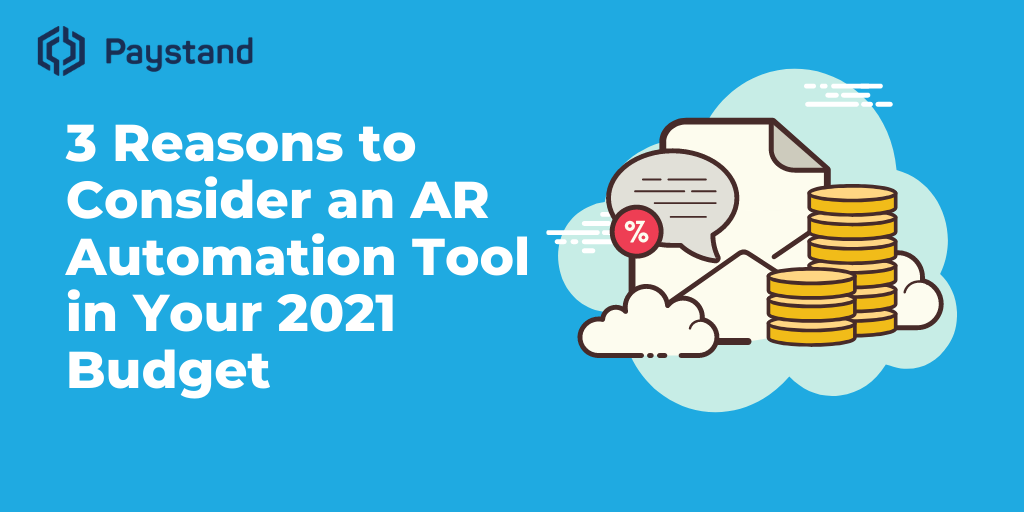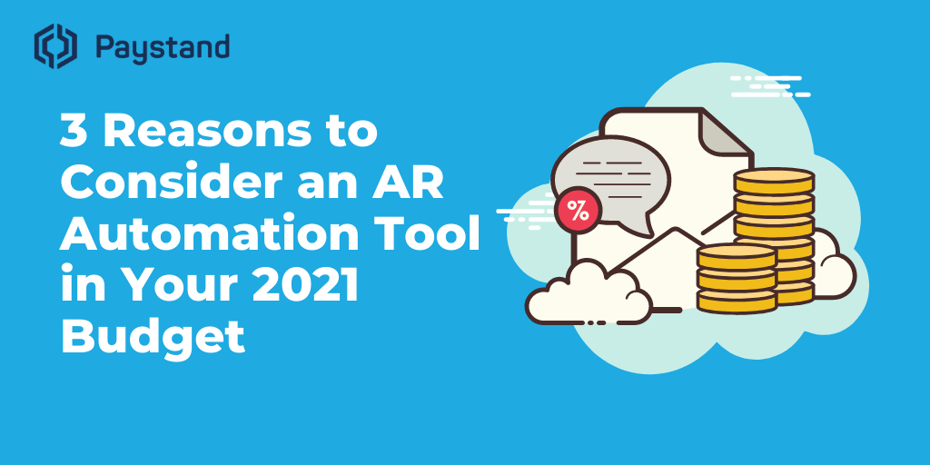Reasons to Consider an AR Automation Tool in 2021


For most CFOs, the COVID-19 crises caused a shift in priorities, leaning towards employee safety, and cutting down expenses in order to survive the unexpected economic shock that unfolded. In this environment, the careful planning and demands of building a budget for 2021 became more than routine exercise. Instead, it became a strategic imperative.
Notably, after improvising and operating from a reactionary position for most of 2020, CFO’s and their finance departments need a consolidated plan for 2021 that aligns resources with strategy. Likely, traditional approaches to budgeting will not be enough. Every industry has been affected differently by economic uncertainty. As some basic needs retailers are thriving, other sectors like department stores find themselves struggling to stay afloat. The standard requirement for businesses now is to get better spend and cost control.
In a recent survey by Mckinsey & Company, 43 percent of the 127 CFO respondents cite the need to streamline their overall budgeting processes to react more quickly and efficiently. Meanwhile, 65 percent anticipate more use of rolling forecasts in 2021 and beyond.
Under such circumstances, the end-of-the-year budgeting, spending, and planning cycle is changing. While Q4 regularly offered businesses a chance to assess new opportunities and invest the remainder of their yearly budget, most companies are now choosing to save their money to prepare themselves for the challenges of 2021.
Although this is in many ways a sound decision, there are other ways companies can recession-proof their finances without sacrificing development opportunities for their financial operations. One of the best options is implementing AR automation tools during the remainder of 2020 and starting 2021 from a position of strength. In today's blog, we're going to walk through why December is the best time for starting the journey to AR automation.
3 Reasons to consider an AR automation tool in your budget now
1. No budget concerns for 2020
In most companies, budgets are fixed for the year, but due to COVID-19, businesses had to become more flexible for shifting resources to survive. We expect the same flexibility to be essential for planning in 2021, building various options and contingencies into the budget, and centrally controlled pool funds for supporting hiring initiatives, R&D, and new tools for process optimization.
However, some optimization tools that operate as a Software-as-a-Service model won't require a significant investment or a down payment upon subscription, giving businesses the option to start billing after the first month has passed. This means that it won't affect the remaining budget of 2020 and can be easily included within the expenses for process optimization of 2021 for a seamless transition.
Research shows that accounting automation will only grow as the need for remote operations arise. A survey of 400 financial decision-makers showed many expect automation to earn a strong ROI for their organization: 84% of respondents believe B2B automation could reduce error rates, and 81% think it could reduce costs (PYMNTS, 2019).
Businesses can start automating their accounting processes now for better control of their finances during 2021.
>>Action: Talk to our team about AR automation today.
2. Get a head start on 2021
Businesses have learned various lessons from 2020. Some outdated payment processes, like paper checks, weren't enough to catch up with the safety needs of remote work.
35% of businesses report high processing costs as a significant challenge with traditional payment methods, as it costs a typical Accounts Payable (AP) organization nearly $8 to process a single supplier payment. (Deloitte, 2019)
Adding a payment automation tool now means your team will have enough time to prepare for a new fuss-free payment process for 2021, saving them hours of manual labor in the long run.
33% percent of mid-size businesses report payment processing time as a significant issue. Payment delays can result from a delay in payment from suppliers/buyers or slow processing methods. (Deloitte, 2019)
This is alarming, considering that In the US, it's estimated that $3 trillion is tied up in business' outstanding accounts receivable (AR), and the average company has 24% of its monthly revenue held up in AR. These tendencies can't keep going during 2021, where the need for quick action and flexibility will reign over every financial strategy.
An automation tool like Paystand can help ease these pains. Using Paystand, businesses convert receivables into cash 62% faster than the competition. The typical Paystand customer saves $90K in labor, $850K in fees, and $1.2M on total AR costs in just three years.
Reducing DSO is a complex task at the top of every CFOs list. Still, an automation ally like Paystand can help lessen these critical numbers by 33%, making sure cash flow remains at healthy levels for a better 2021.
>>Action: Sign-up for access to our Smart Lockbox beta
Make faster decisions
Most ERPs help financial teams manage their Accounts Receivable and Accounts Payable but do very little when processing payments and gathering information from different systems. This means that accounting teams have to jump back and forth between software for invoicing, collecting and reconciling payments to ensure the information is aligned, taking up too much time and allowing very little visibility.
Now, AR automation tools like Paystand can integrate seamlessly with most ERPs for keeping the whole process in one system: from sending recurring invoices with payment links to automatic reconciliation once the payment is done. For AR teams, this means that they can have all data in one dashboard, giving them a birds-eye view of every transaction carried out within their platform in real-time. Better access to data leads to faster and more informed decisions, proving invaluable in today's uncertain economy.
3. Create resiliency in your AR team
Employee safety should be a priority for every business. Under this lens, remote operations are starting to become the norm in many companies, but some have struggled to turn into digital processes, especially AR teams, who still needed to be in offices to deal with incoming mail, paper checks, and invoices.
The pandemic forced many businesses to make the switch for AR automation solutions. 78% of finance professionals predict that all the future accounting methods will be automated. (Thomson Reuters, 2019) but these numbers grew as the need for digital solutions became imperative for survival.
By adding automation tools to AR processes, companies are ensuring their teams can still carry out their daily duties from their home's safety.
As the pandemic-related events continue to unfold, one thing remains sure: the digital process can mean the difference between continuing to operate or falling behind during 2021. Starting strong with every tool in place is still one of the top bets to remain stable during the next year.
In conclusion
Adopting AR automation tools now poses minimal risks to the remaining 2020 budgets and can provide an edge for a strong 2021 financial strategy.
Business demands will need AR teams to move faster with a greater access to information from day one, and it makes sense to start preparing the ground for the challenges that may come during 2021.
Paystand's Payments-as-a-Service model is an excellent option for starting to incorporate automation now and reap a strong AR strategy during 2021. Now is time to start future-proofing your AR processes for ensuring more revenue, easier transactions, and saving time a bulk of time on manual processes. If you want to know more about how Paystand can help your business make the most of their 2021 AR strategy, contact one of our experts today.





